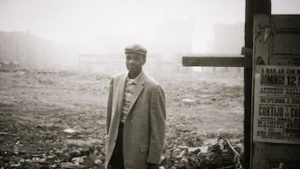
*Black history and modern American urban renewal are affirmed in 1948. This relocation of people began with the Taft-Ellender-Wagner housing bill, which had passed the Senate at the time.
The Urban Renewal Act of 1949 followed and set up urban renewal projects in cities across North America and the United States. Urban renewal, especially at the outset, was a program designed to clear large areas of "slum" housing to make way for modern developments. The cleared land was sold to private developers for new developments to extend the central business district or attract middle-income residents. In either case, the former residents were moved outside the renewal district.
Such major projects as the Lincoln Center in New York City, the Civic Arena in Pittsburgh, Pennsylvania, and the New Jersey College of Medicine and Dentistry in Newark, New Jersey, resulted from urban renewal. The same is true across America. Detroit, Chicago, Minneapolis/St. Paul, Kansas City, St. Louis, Los Angeles, etc. This era fell disproportionately on Black communities, leading to the slogan "Urban renewal is Negro removal." The short-term consequences were dire, including loss of money, social organization, and psychological trauma. The long-term consequences flow from the social paralysis of dispossession, most importantly, a collapse of political action.
Urban renewal had significant implications for the wellness of low-income, Black, and Brown citizens. A mix of renovation, selective demolition, commercial development, and tax incentives is most often used to revitalize urban neighborhoods. An example of an entire eradication of a community is Africville in Halifax, Nova Scotia. Gentrification is controversial and usually results in familiar patterns of poorer residents being priced out of urban areas into suburbs or more depressed cities. Some programs, such as Fresh Ministries and Operation New Hope in Jacksonville, Florida, and the Hill Community Development Corporation (Hill CDC) in Pittsburgh's historic Hill District, tried to develop communities with mixed results.
They combined highly favorable loan programs with financial literacy education so that poorer residents were not displaced, with mixed results. At the outset, urban renewal inspired the imagination of many, and a broad coalition of industry, labor, and community groups supported the program. As urban renewal expanded, community opposition grew. Jane Jacobs's book, The Death and Life of Great American Cities,10 was the manifesto of the antiurban renewal movement; it criticized the social and aesthetic damage the program was causing and called for alternative, more organic approaches to the modernization of cities. Urban renewal sometimes lived up to the hopes of its original advocates, as assessed by politicians, urban planners, civic leaders, and residents, playing an important and controversial role.
However, urban redevelopment projects have often failed in several American cities, wasting significant public funds for no purpose. Replacement housing, particularly high-rise housing for low-income tenants, has not been successful. These projects are difficult to police, leading to increased crime, and such structures might be dehumanizing. Public housing projects like the Robert Taylor Homes, Cabrini-Green in Chicago, and Pruitt-Igoe in St. Louis became so bad that they were demolished.